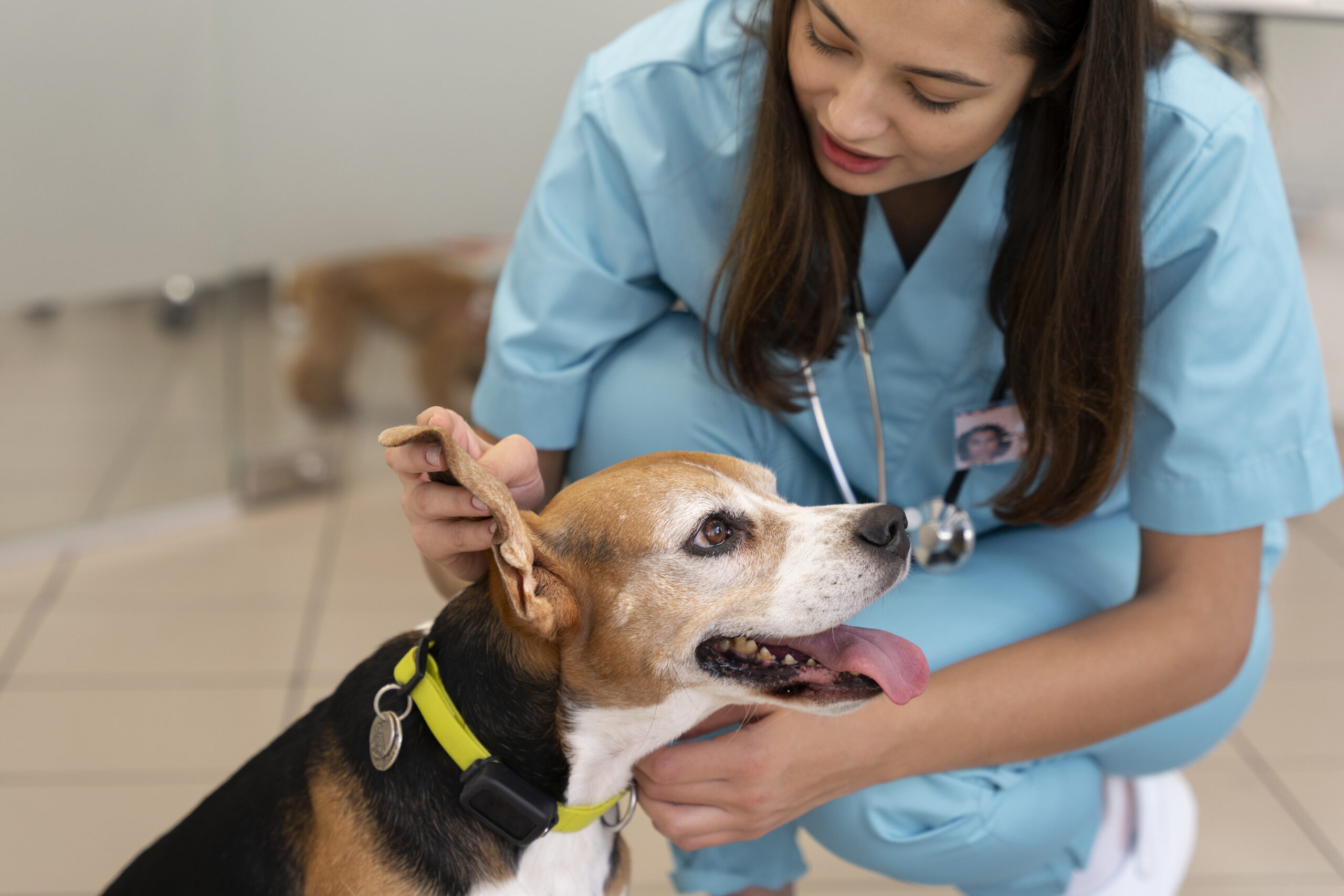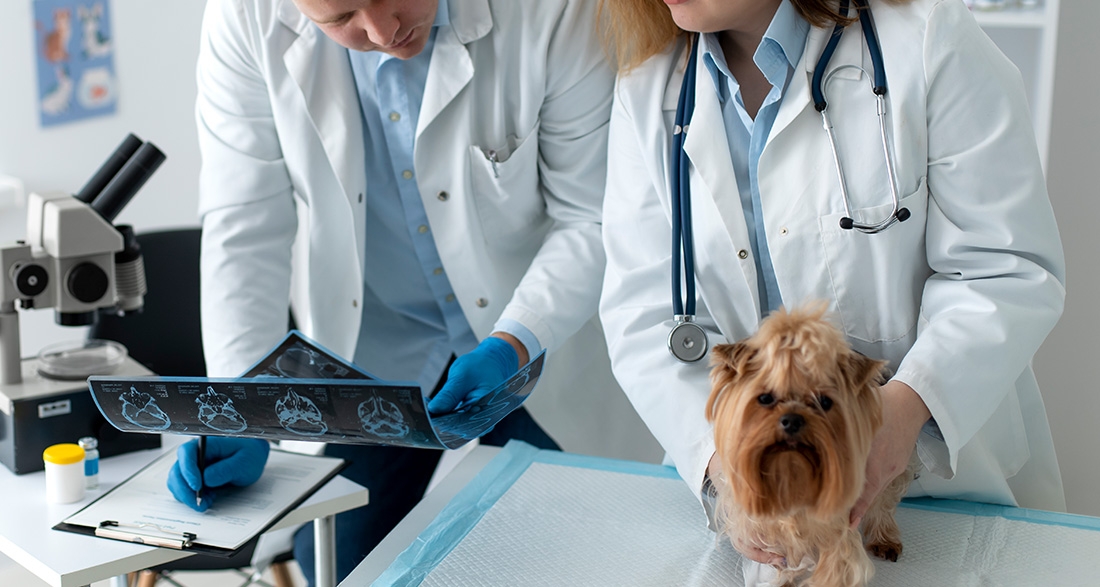Tick bites are unpleasant and can be dangerous for humans, and dogs are no exception. Beyond Lyme disease, ticks can also transmit other pathogens, including Anaplasma (A.) phagocytophilum, which can trigger anaplasmosis in dogs.
What is it all about? How do you proceed when dealing with an illness, and how can you take precautions for your furry friend? All of this will be explained below.
- What is Anaplasmosis in Dogs Exactly?
- Anaplasmosis in Dogs – Pay Attention to Symptoms
- How can a disease be diagnosed?
- Detection of Pathogens in Anaplasmosis
- How Does Anaplasmosis Progress in Dogs?
- How is Anaplasmosis treated?
- Are there preventive measures against this disease?
- Considering Experiences with Anaplasmosis in Dogs
What is Anaplasmosis in Dogs Exactly?
Anaplasmosis refers to an infection caused by the pathogen Anaplasma (A.) phagocytophilum, which can affect mammals, including dogs. The transmission is primarily carried out by hard ticks that attach to the animal for 36 to 48 hours.
Especially during months when ticks are particularly active, the risk of infection increases, provided that animals spend a lot of time outdoors. Ticks acquire the bacteria in an early developmental stage from other hosts and transmit them to mammals. Rodents, as well as red deer, birds, wild boars, or foxes, can carry Anaplasma permanently.
Approximately 20 to 30 percent of dogs in the US already have antibodies against Anaplasma (A.) phagocytophilum. The infection often goes unnoticed. However, some breeds and age groups are more susceptible than others, with males being more commonly affected than females.
When dogs are bitten by ticks imported from abroad, the likelihood of developing an infection increases. In general, your four-legged friend is less at risk unless dealing with other bacteria such as Babesia or Borrelia.
Important:
Targeted tick prevention protects your dog!
Anaplasmosis in Dogs – Pay Attention to Symptoms
To anticipate, the typical symptoms are challenging to distinguish from other canine diseases. They are generally of a more generic nature, including:
The immune system is weakened, leading to potential complications like retinal inflammation, cough, or balance disorders.
These symptoms may resemble those of Leishmaniasis in dogs, spread by sandflies and prevalent in warmer climates. Sandflies transmit the single-celled organism Leishmania infantum to dogs. Hence, a specific vaccination is recommended before traveling to South America.
In contrast, indications of Anaplasmosis include:
- High fever lasting over three to five days
- Nosebleeds
- Swollen lymph nodes
- Superficial bleeding
If your pet has been in southern regions and bitten by ticks, the risk of Anaplasma infection is high. Relevant areas include Southern Europe, South America, Asia, Africa, or Australia. This could involve infectious canine cyclic thrombocytopenia or a Canine Anaplasma platys infection. The course is similar to what was mentioned earlier, typically resulting in infection without noticeable symptoms. It is crucial to inform your veterinarian about the foreign stay so that they can conduct targeted examinations and treatment.

How can a disease be diagnosed?
If your dog exhibits the mentioned symptoms, it is crucial to consult a veterinarian. The veterinarian will not only examine the blood but also tissues and fluids.
Using the results, the veterinarian can proceed through the process of elimination:
- Infected dogs have a low count of blood platelets, or thrombocytes, due to the immune system’s response to bacterial invasion.
- During an acute illness, antithrombocytic antibodies can be detected. Simultaneously, the count of white blood cells (leukocytes) usually either becomes too high or too low.
- Another change involves the protein levels in the blood. A high level of globulin could indicate an infection, just as a low level of albumin could.
Additional indicators are provided by liver values, joint fluid, and bone marrow to assess the severity of the disease:
- High liver enzymes
- High protein content in joints
- Reduced blood cell production in the bone marrow
- Anemia
Detection of Pathogens in Anaplasmosis
A blood test can provide clues about an infection, but it cannot identify the specific pathogen. Further investigations are necessary, such as PCR (Polymerase Chain Reaction), IF (Immunofluorescence), or the ELISA test.
- PCR: This test examines the dog’s DNA for specific, predefined markers. If the infection is currently acute, the test result is positive, providing a specific indication for the diagnosis. However, a positive test result does not necessarily mean that your pet is actually sick and will develop symptoms.
- IF or ELISA: These methods target antibodies against Anaplasma. Naturally, these can only be applied in a later stage of the infection, as antibodies take time to form.
How Does Anaplasmosis Progress in Dogs?
Depending on the infestation and your dog’s immune system, the infection can vary in severity:
The incubation period varies significantly, ranging from four days to two weeks. The immune system is also crucial here. After the tick bite, the pathogen enters your dog’s body within two to four days from the gut.
Anaplasma infects white blood cells. Gradually, organs are affected through the blood and lymphatic system, including the central nervous system, heart, liver, spleen, lungs, and kidneys. The immune system responds, becoming weakened accordingly.
It is currently assumed that, after an initial infection, dogs mostly transmit the pathogen. Therefore, they do not necessarily have to become ill, but the stressed immune system often allows other diseases to occur more frequently.
Important:
Infected dogs and other mammals are not contagious and, therefore, pose no danger to other animals and humans. Typically, ticks are responsible for transmission.
Exception: If your dog donates blood, Anaplasma could naturally be transmitted to other dogs.

How is Anaplasmosis treated?
To put it succinctly, attempting to treat Anaplasmosis in dogs homeopathically is likely unrealistic. Similar to other tick-borne diseases, a highly effective antibiotic, such as Doxycycline, is necessary.
Typically, 5 mg of Doxycycline per kilogram of body weight is administered every 12 hours. The treatment usually lasts between two to three weeks. The effectiveness of the treatment can be monitored by observing the rise in platelet count.
A positive effect is often observed within a few days of treatment, and a significant improvement is usually noticed within a week. Overall, the chances of recovery are very good, and there is little reason to worry about a fatal outcome of Anaplasmosis in dogs.
After the end of the treatment, antibodies can be detected in the organism for up to a year. However, this is not a cause for concern; it is a completely natural process.
Are there preventive measures against this disease?
There are no specific preventive measures or vaccines, but in general, the course of this disease depends on the strength of your pet’s immune system. A healthy diet, such as Anifit’s wet dog food, which has a high meat content, no unnecessary additives, and all the nutrients your four-legged friend needs, can be beneficial.
In addition, your dog needs sufficient exercise, and targeted tick prevention is always advisable. Currently, you can only vaccinate your dog against Lyme disease.
All other diseases transmitted by ticks can only be managed through:
- a robust immune system and
- targeted treatment.
Considering Experiences with Anaplasmosis in Dogs
In general, the chances of recovery are very good if your dog is bitten by a tick and develops Anaplasmosis. However, the fact remains that the disease can have serious consequences. The symptoms such as fever in dogs, lameness, or anemia can be challenging for both humans and animals.
It is all the more important to strengthen the immune system with high-quality nutrition and protect the animal against ticks. The less the organism is attacked by tick-borne pathogens, the smaller the risk of a severe course of the disease.
Since there is no vaccine, it is not possible to completely eliminate the risk of infection. In such cases, we recommend a pain reliever for the dog to alleviate the burden of the disease. If necessary, you can also administer a specific calming agent for the dog, allowing it to recover peacefully and regain strength quickly.


